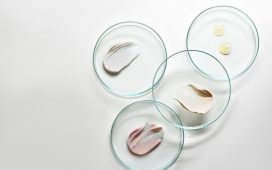Robert Langdon, the main character of ‘Inferno,’ discovered ‘The Kiss.’ He first saw this masterpiece by Gustave Klimt at the Galleria Internazionale d’Arte Moderna in Venice, Italy. The masterpiece was displayed at the most exclusive baroque Venetian palace while it was given as a loan from Vienna. If you haven’t read about this gem of the art world yet, you must not waste any more time in uncovering all the thrilling details for yourself.
Langdon gives credit to Venice Ca’ Pesaro for bringing home the awareness of his lifelong passion for modern art.
The masterpiece in question here is “The Kiss” is an oil painting by Gustav Klimt, the Austrian symbolist artist. The oil painting includes gold leaf and the addition of silver. This painting, for many, in the early modern era’s masterpiece. It is an icon of the Viennese Art Nouveau, Jugendstil, and is the most popular work of Gustav Klimt.
Gustav Klimt, the Painter
Gustave Klimt, the Austrian painter, was born in Baumgarten in 1862. Being the son of a silver and gold engraver, Gustave Klimt followed much in his father’s footsteps, much like some of his seven siblings. Gustav became a part of Vienna’s School of Applied Arts by 14 years of age. Gustav set up his first own, independent studio in 1883, during this time, he specialized in the paintings of murals. He began taking on decorative commissions, including ceiling paintings and elaborate murals for theatres and other public buildings.
It was during the late 1880s that Gustave started incorporating mythological figures and classical themes in his commissions. He executed such deftness and precision that he caught the attention of Emperor Franz Josef with his work. The Emperor for Klimt’s frescoes at the Burgtheater of the city gave him the Golden Order of Merit as an award.
Klimt became one founder of the Vienna Secession, a school of painting. The school was established by a group of painters in 1897. These painters had a strong focus on exploring the artistic possibilities beyond the boundaries of academic tradition. The characteristics of this style contain references to nature, flat perspective, and curved lines. Until 1908, Klimt remained a part of the Secession.
Klimt’s style matured in 1897, during which three allegorical murals came to life under his hand (Medicine, Philosophy, and Jurisprudence). He painted these murals on the ceilings of the auditorium at the University of Vienna. However, these murals did not receive acceptance because of the scandal they caused.
During the paradoxical atmosphere of the Bohemian city of Vienna, Klimt’s art matured. He channeled his reflection on dreams, mortality, and desire and used symbol-laden and lush paintings for his expression.
The Kiss: Gustav Klimt’s Masterpiece
This masterpiece emerged between 1907-08. It was during the high point of the “Golden Period” of Gustav Klimt that he produced several artworks in a familiar gilded style.
His “Golden Phase” inspiration perhaps came from a visit to Ravenna when he was travelling through Italy in 1903. He was introduced to the Byzantine mosaics world during this period. The perspective lack and the mosaic’s flatness only served to boost the golden brilliance for Gustav. Owing to this, the artist began making unparalleled use of silver leaf and gold in his works.
You can find “The Kiss” in the Austrian Gallery, located in the upper Belvedere Palace in Vienna. The painting is the depiction of a couple in a field of flowers, lovingly embracing. The painting shows the man poised over the woman while she clings to him, awaiting his kiss. To ornamentally describe it, the female figure appears dominantly in the form of floral patterns and soft lines while the male figure in rectangular and square forms.
The couple is surrounded by a golden halo and seems to have shed off all the earthly weight. The embrace exudes a feeling of someone transcending into an almost sacred, infinite sphere. Klimt gives the couple a complete aura of intimacy while the rest of the painting has an extravagant, shimmering flat pattern.
The pattern chosen for this painting shows a strong connection to Art Nouveau along with the Crafts and Arts organic forms. The background simultaneously stimulates the conflict between the work of Degas and certain other modernists and the two or three-dimensionality.
The Kiss and other such paintings were visually manifesting because they conveyed sensuous and opulent images by capturing decadence. The gold leaf brings to mind the gold-ground paintings of the medieval times. They contain illuminations of earlier mosaic manuscripts while the spiral patterns in the outfits bring to mind the Bronze Age art. We also see the decorative tendrils that people had only seen before classical times in Western art.














